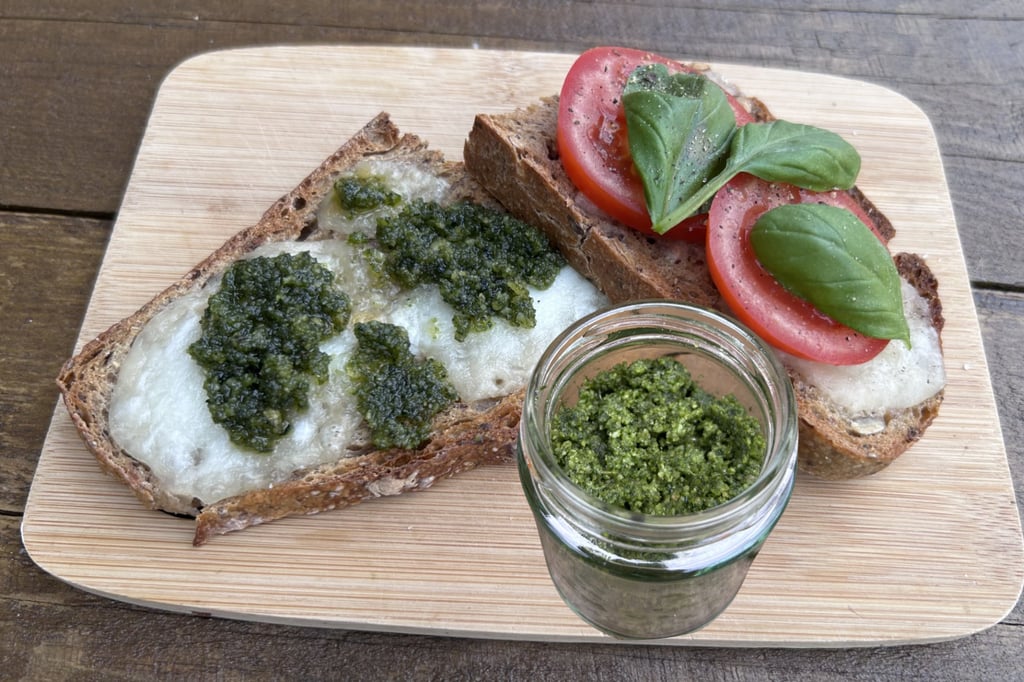Wild Garlic Pesto
A versatile recipe for busy, healthy eaters
5/26/20252 min read


I went wild garlic foraging for the first time with friends — and wow, what an exhilarating experience! In the UK, wild garlic season stretches from March to July and it really is nature’s springtime gift. Alongside garlic, onions and leeks, wild garlic is a member of the allium family. Its botanical name Allium ursinum means “bear garlic” and legend has it that after waking from hibernation, bears feast on it to cleanse and nourish their bodies!
All parts of the wild garlic including flowers can be eaten and are packed full of goodness: from high in vitamin C, A and iron to antibacterial and antioxidant properties. It is rich in inulin, a soluble fibre, which feeds the good bacteria in our gut. Combining it with pumpkin seeds and extra-virgin olive oil in a pesto provides protein, healthy fats, fibre and minerals such as manganese, magnesium, phosphorus and zinc, beneficial for heart, bone and immune health and blood sugar balance. Add grated parmesan cheese or for a dairy-free version, use fortified nutritional yeast. Pesto will keep well in the fridge for a few weeks or a couple of months in the freezer, although it loses its ‘garlicky kick’ when stored. Wild garlic is so versatile and can be used in soups, stir-fries and omelette. If you cannot use it all, chop it up and store in the freezer for using in soups.
INGREDIENTS
Serves 2-3
100 g wild garlic leaves
1/2 cup (70g) pumpkin seeds
1/2 teaspoon sea salt
60g parmesan cheese, grated (or if dairy-free, substitute with 4 tablespoons fortified nutritional yeast)
freshly ground black pepper
50ml extra virgin olive oil
METHOD
1. Wash the wild garlic leaves and thoroughly dry, using a salad spinner, or leaving to air dry on a kitchen towel.
2. Gently roast the pumpkin seeds, making sure you toss them often to avoid burning.
3. When completely cool, grind in a food processor (or use a stick blender) with salt, pepper and cheese (or yeast flakes).
4. When coarsely ground, gradually add olive oil and blend to desired texture.
NB. If not available, pumpkin seeds can be substituted with walnuts, cashew or pine nuts.
If you decide to go foraging, follow the advice on how to do so safely and sustainably from the Woodland Trust website https://www.woodlandtrust.org.uk, which states:
Not to be confused with: lily-of-the-valley when not in flower, though the leaves of wild garlic grow from the plant base whereas lily-of-the-valley has two or three leaves on its stem. When in flower, lily-of-the-valley is easily distinguishable from wild garlic as it has bell-shaped, white flowers. Lily-of-the-valley is poisonous so be sure to fully identify wild garlic before foraging.




